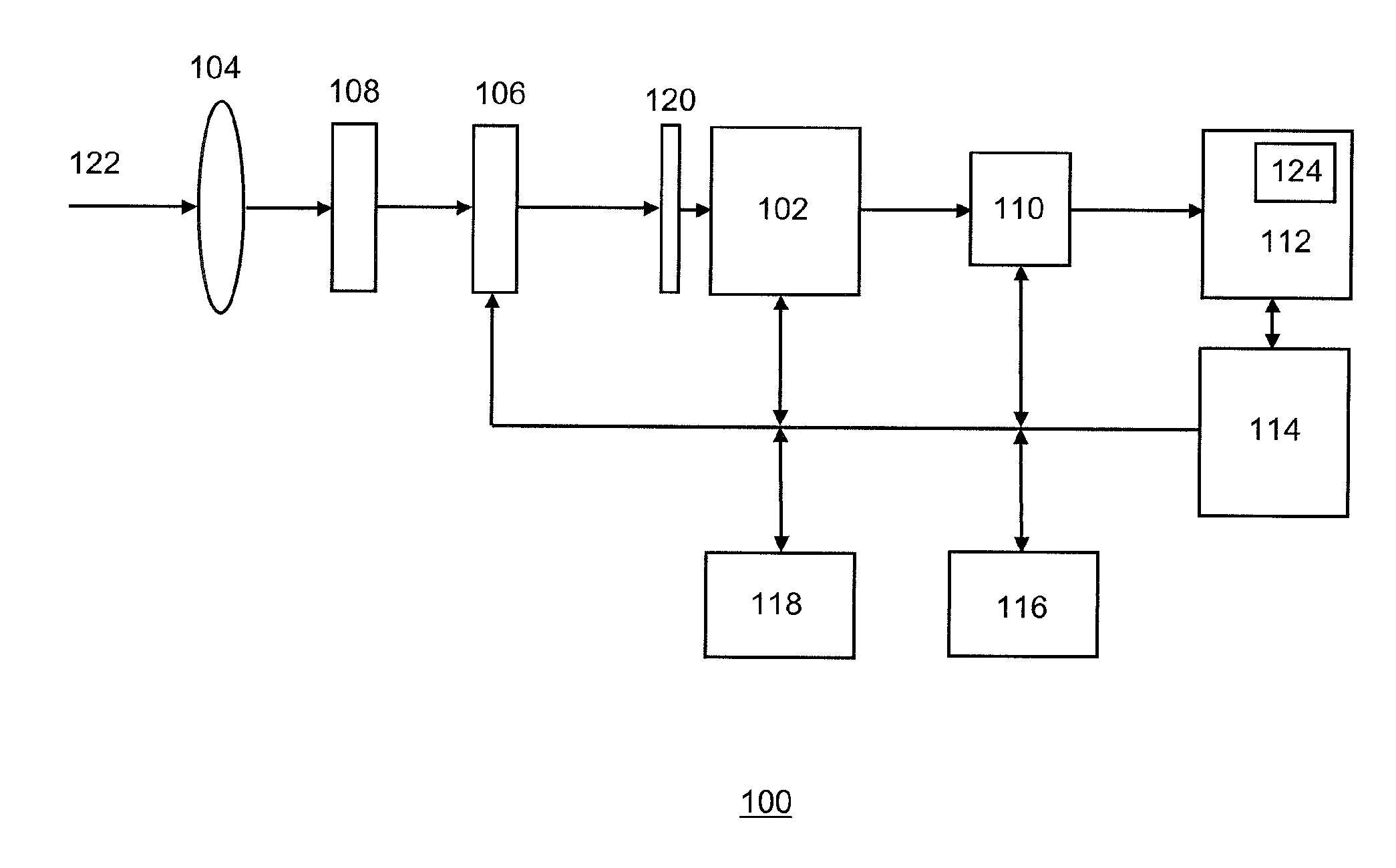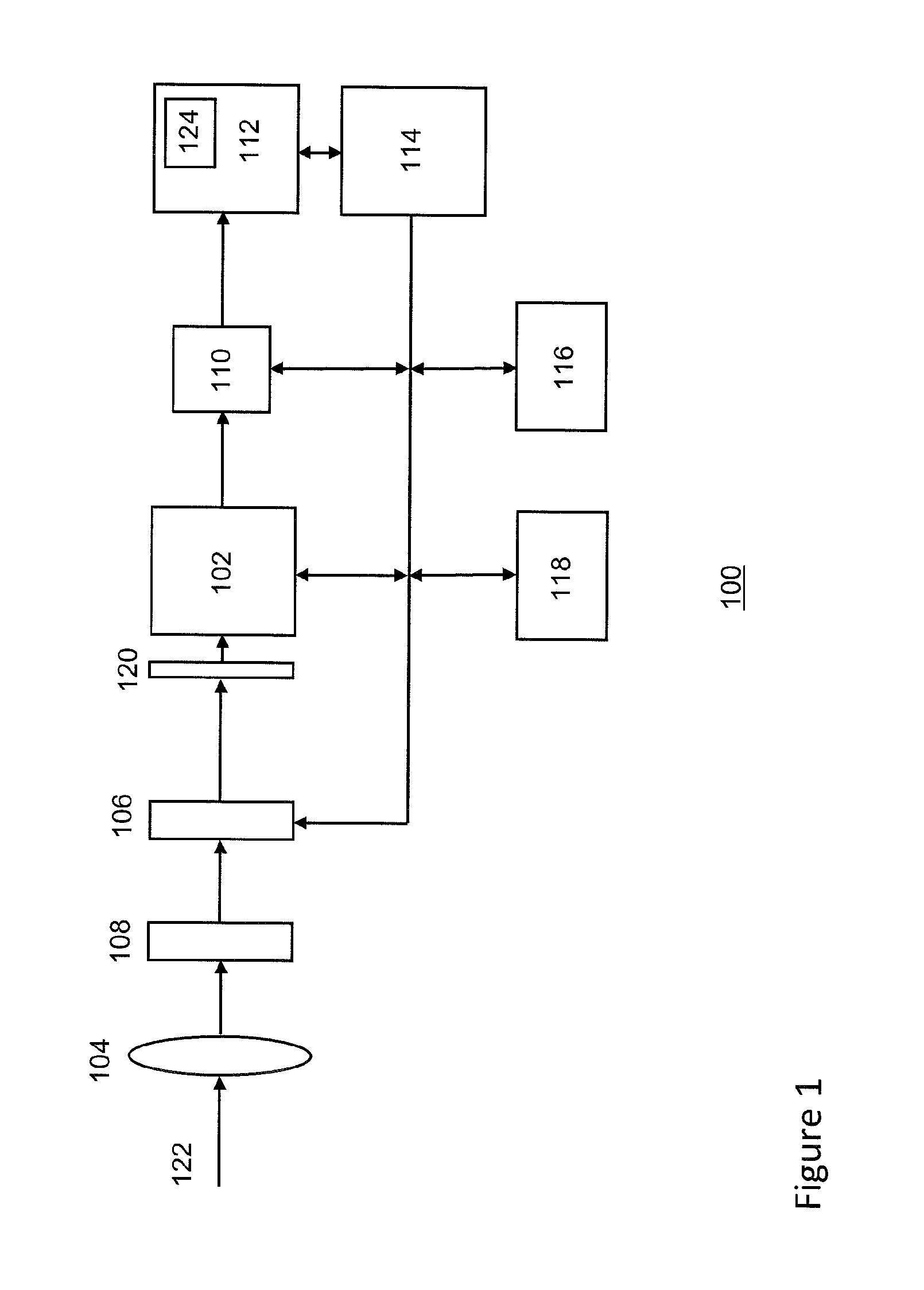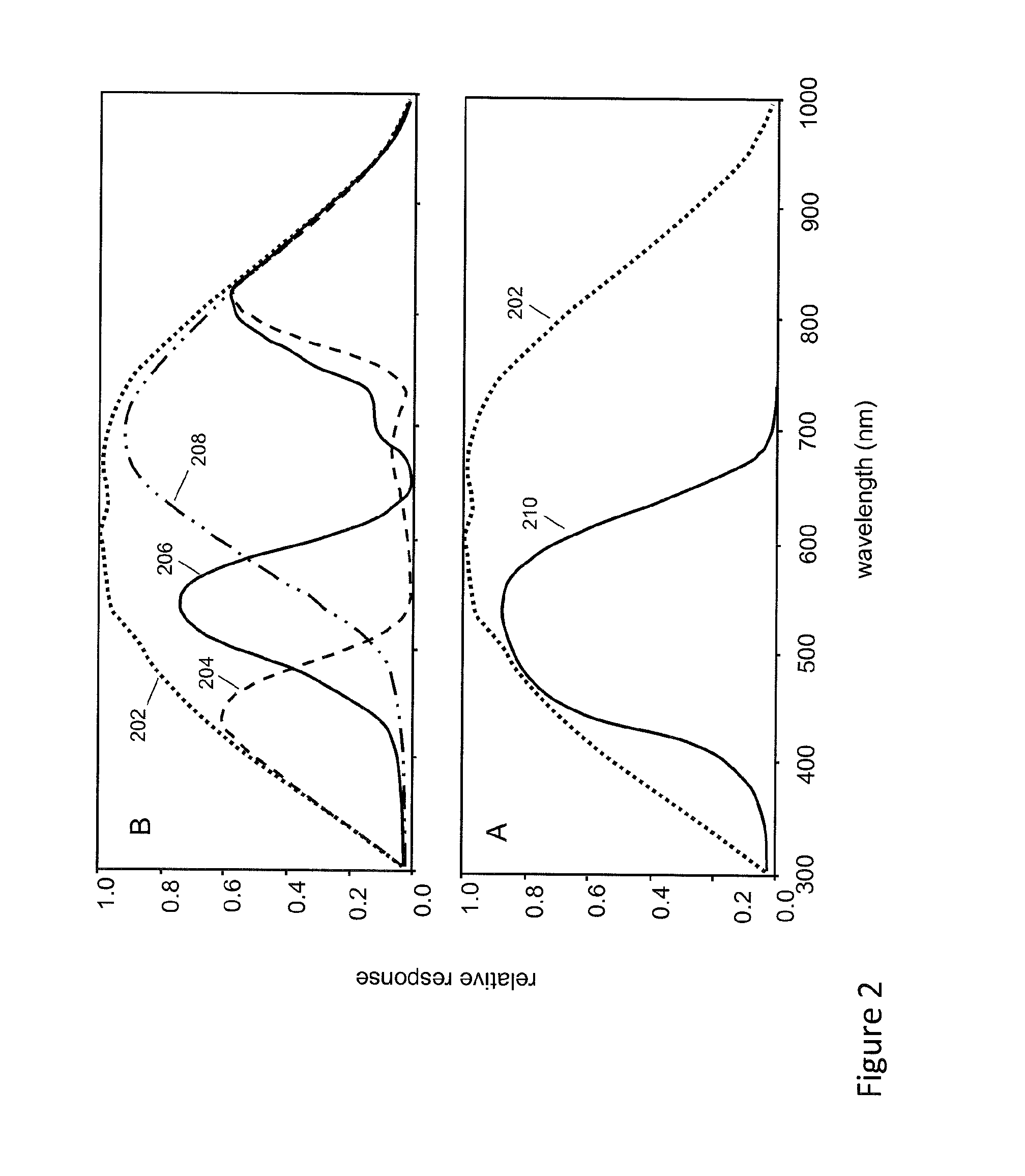Flash system for multi-aperture imaging
a multi-aperture, flash technology, applied in the field of flash systems for multi-aperture image data, can solve the problems of reducing the shutter speed by a factor of 4 or 8, reducing the camera's performance in low light, and reducing the effect of motion blur, improving the signal to noise ratio, and being easy to access
- Summary
- Abstract
- Description
- Claims
- Application Information
AI Technical Summary
Benefits of technology
Problems solved by technology
Method used
Image
Examples
Embodiment Construction
[0042]FIG. 1 illustrates a multi-aperture imaging system 100 according to one embodiment of the invention. The imaging system may be part of a digital camera or integrated in a mobile phone, a webcam, a biometric sensor, image scanner or any other multimedia device requiring image-capturing functionality. The system depicted in FIG. 1 comprises an image sensor 102, a lens system 104 for focusing objects in a scene onto the imaging plane of the image sensor, a shutter 106 and an aperture system 108 comprising a predetermined number apertures for allowing light (electromagnetic radiation) of a first part, e.g. a visible part, and at least a second part of the EM spectrum, e.g. a non-visible part such as part of the infrared) of the electromagnetic (EM) spectrum to enter the imaging system in a controlled way.
[0043]The multi-aperture system 108, which will be discussed hereunder in more detail, is configured to control the exposure of the image sensor to light in the visible part and, ...
PUM
 Login to View More
Login to View More Abstract
Description
Claims
Application Information
 Login to View More
Login to View More - R&D
- Intellectual Property
- Life Sciences
- Materials
- Tech Scout
- Unparalleled Data Quality
- Higher Quality Content
- 60% Fewer Hallucinations
Browse by: Latest US Patents, China's latest patents, Technical Efficacy Thesaurus, Application Domain, Technology Topic, Popular Technical Reports.
© 2025 PatSnap. All rights reserved.Legal|Privacy policy|Modern Slavery Act Transparency Statement|Sitemap|About US| Contact US: help@patsnap.com



